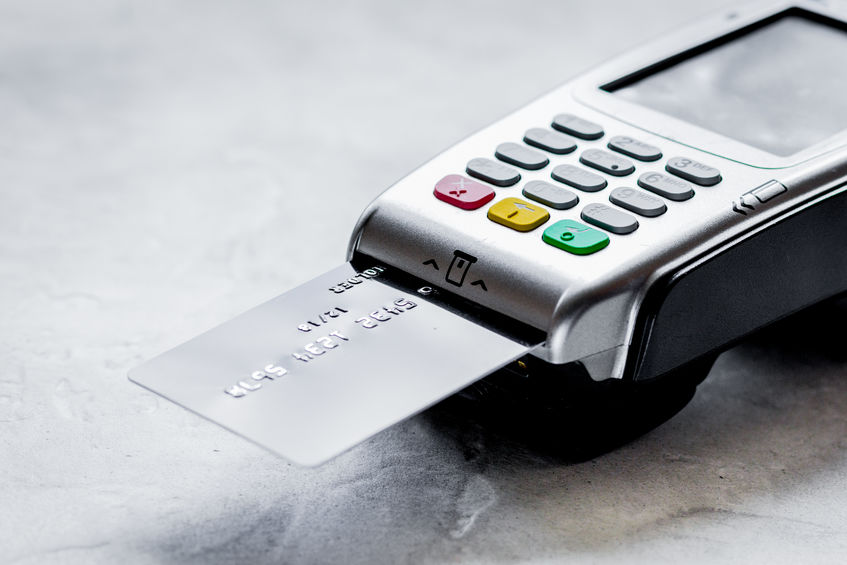Ecommerce Payments Small Businesses: How They Work & Get Started
The world is digital, and today’s consumers demand seamless omnichannel experiences including easy online and mobile shopping. Yet despite almost 20% of all retail transactions taking place online, one in three American small businesses still don’t have a website. There are plenty of reasons so many merchants haven’t embraced ecommerce, but one of the biggest is a lack of understanding. Many merchants avoid the web because they assume accepting payments online is difficult or expensive, but with a little understanding even tech-averse business owners can begin selling online. With that in mind, the following is a crash course in how online payments work, what goes into accepting them, and what merchants need to look for in an ecommerce payment processing partner.
How Online Payments Flow
When a customer lands on an ecommerce site and makes a purchase, an entire chain of events must take place in order to ensure the payment is accepted, the merchant gets the money, and the customer gets the all-satisfying confirmation and eventual delivery of their product or service. That string of events starts at the merchant’s website and flows through a series of players including payment processors and banks, both playing an important part in the payments ecosystem.
Step One: The Customer Connection
All ecommerce transactions start with the customer submitting a digital payment. How they do that depends on factors like the type of ecommerce systems the merchant is using and whether they’re making their payment through a website, an app, a transfer, or any other method.
The most commons scenario involves the customer making their payment on the merchant’s website, either using their computer or mobile phone. The customer initiates the checkout process and enters and submits their payment information, marking their first interaction with the plumbing that facilitates online payments – the merchant’s gateway.
The gateway performs a number of important functions including validating the user’s card data and, most importantly, encrypting the payment information and safely transmitting it to the company that will ultimately process the payment.
Merchants may also opt to offer alternate checkout technologies, like digital wallets. Digital wallets like Apple Pay allow users to bypass traditional checkout and payment data entry and add additional levels of security, like biometric verification. Regardless of what type of checkout the customer chooses, the merchant’s payment gateway handles the key task of encrypting and transmitting the data.
Step Two: Payment Processing
Once a customer’s payment data has been encrypted and sent off, it enters processing. Payment processing is handled by two primary parties: the customer’s payment processing partner – either a merchant services company or a third party like PayPal – and the customer’s issuing bank.
First, the encrypted payment data arrives at the payment processor. The data may have been fraud-checked by a third-party tool prior to this point. Even if it has, it will also be automatically and instantaneously checked by the processing company against a variety of known fraud triggers. The buyer’s payment information will then be transmitted from the processor to the customer’s issuing bank to be approved or declined.
When the bank that issued the customer’s card receives the payment request, the amount of the payment will be checked against the customer’s account to ensure sufficient funds and additional anti-fraud checks may happen as well. Assuming everything checks out, the issuing bank will automatically authorize the payment and that information will be passed back to the payment processor, and in turn to the payment gateway. This will alert the ecommerce merchant and customer and authorize the release of the goods or services.
The payment processor may seem like a redundant step since its primary task is just to pass information back and forth, but processors are a key part of the payments ecosystem because, without them, issuing banks would be overwhelmed by the millions of merchant they’d have to deal with on a daily basis.
Step Three: Settlement and Funding
With the payment authorized, the money begins to flow from the customer’s account to the merchant’s. To simplify the process, the settlement of transaction funds is done in periodic batches rather than each individual transaction initiating its own transfer. While the payment authorization itself can be completed in seconds, the settlement and payout of funds take significantly longer.
First, the customer’s bank sends the funds to the payment processor for disbursement to the merchant. As the potential for fraud still exists at this stage, the payment processor generally holds on to those funds for two or three business days to help ensure any potential fraud can be brought to light. That period of time, known as the “standard hold” period, varies from processor to processor but in all cases exists to help protect everyone involved from risk.
Once the hold period expires, the funds from the transactions are released to the merchant’s acquiring bank where the merchant gains full access. At this point, the ecommerce payment is complete (unless a dispute arises down the road.)
How to Get Started Accepting ECommerce Payments
Businesses looking to begin accepting payments online need to integrate their website into the payment processing ecosystem, which means signing on with a payment processing partner to handle authorizations and getting set up with a payment gateway to enable website checkouts.
The first choice ecommerce businesses have to make is whether to sign up for their own merchant services account with a payment processor or to go with a third-party processing service like PayPal or Stripe. There are benefits and drawbacks to each option, but the main distinction comes down to ease and price. Third-party providers process transactions under their own master merchant account and, in turn, get to decide who they do business with. The bar for account approval through a company like PayPal is generally much lower than a traditional merchant account, and a new account can often be set up in a matter of minutes. But being less picky means more risk, and third-party processors make up for that risk through higher fees – often up to double the fees a merchant could get with their own account and merchant ID.
Individual merchant accounts require a much higher level of due diligence, but access to lower fees and improved billing transparency make the additional hurdles more than worthwhile for most full-time merchants doing any significant volume of business. Individual merchant accounts also provide a more direct relationship between merchant and processor whenever support is needed – a big benefit since service interruptions mean lost revenue.
What to Look for in an Ecommerce Merchant Services Provider
Businesses opting to go with their own merchant account will find a significant number of payment processing options available to them, and choices will have to be made when selecting the right partner. While many payment processors offer similar products and services, there are certain stand-out features that merchants should always look for in a new payment processor, including interchange-plus pricing, next-day funding, and a robust fraud support program.
Interchange-Plus Pricing
Transaction fees represent a huge expense for online merchants, and minimizing them is an important step in establishing long-term profitability. Interchange-plus pricing is the payments industry’s least costly and most transparent pricing model, making it a top priority when looking for a merchant services partner. Unlike standard pricing models which set wide-reaching price categories that err towards the high side, interchange-plus uses the actual interchange rates set by the card issuers to ensure fees are as low as possible for each and every transaction.
Next-Day Funding
As mentioned earlier, most processors put a standard hold on transaction funds. All brand new ecommerce merchants should expect to deal with some kind of hold, but some processors offer next-day funding to established businesses with a track record of trustworthy operations. Next-day funding sees the money from transactions hit a merchant’s bank account the next business day, as little as ten to twelve hours after a batch of transactions is settled. Faster access to cash ensures lower receivables and healthier cash flow – two keys to financial health – making next-day funding an important feature to look for.
Fraud Support
Fraud has the potential to cause major harm to merchants from both the loss of revenue and inventory and the potential damage it can do to a company’s reputation. When selecting a new payment processor, merchants should always look for a partner that offers a robust set of fraud and chargeback defense features to help minimize those potential costs. There is no such thing as too much fraud protection, and the right payment processor can be an invaluable part of any merchant’s fraud protection efforts.
BAMS is a leading payment processor offering a wide variety of services to ecommerce merchants across all industries. BAMS’s interchange-plus pricing model guarantees the lowest fees possible, and BAMS merchants also get access to a suite of value-added services, including next-day funding, advanced fraud and chargeback defense systems, seamless gateway integrations, and much more.
To find out more about everything BAMS can do for your ecommerce business, begin your custom five-point price comparison now.




